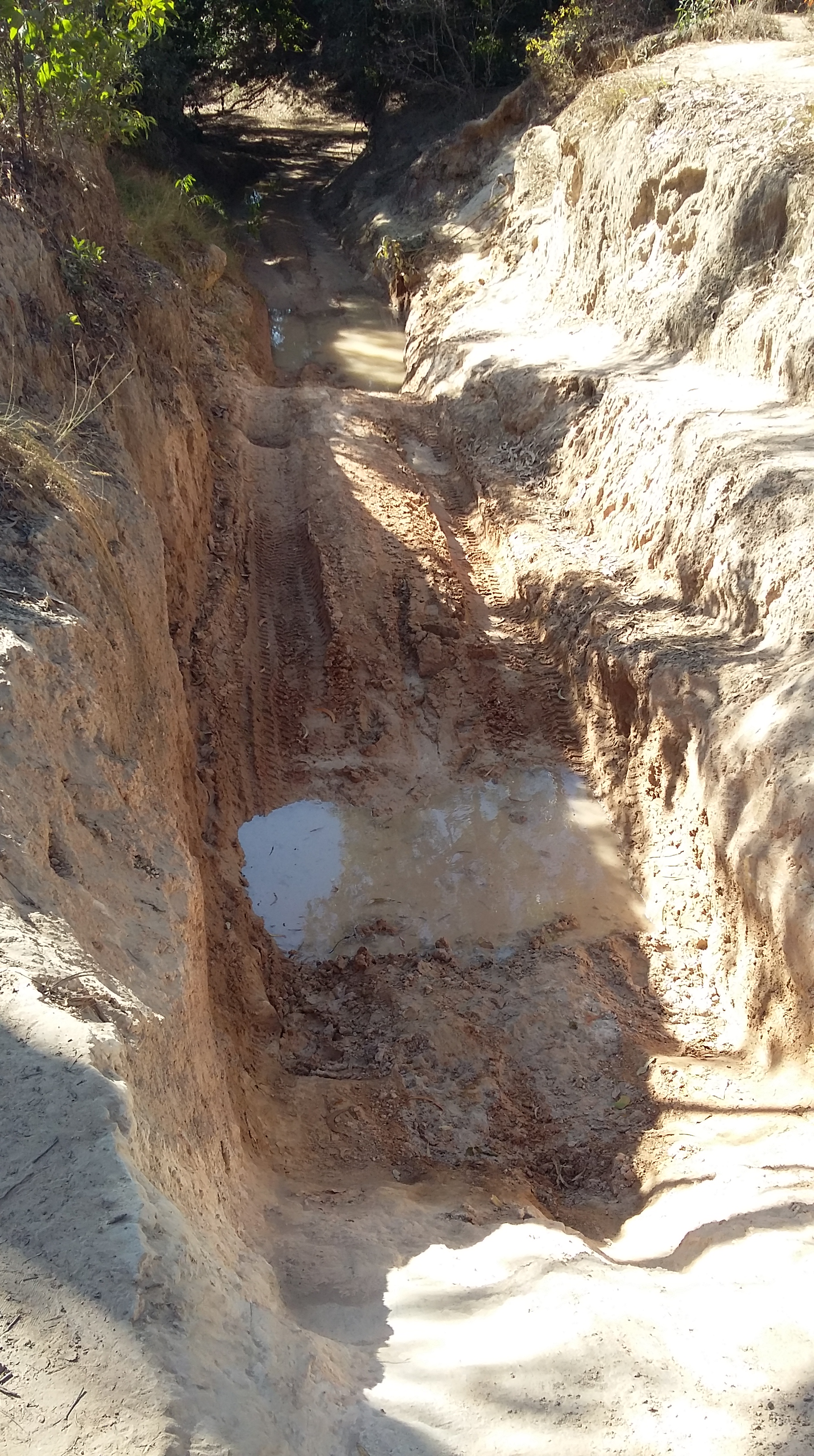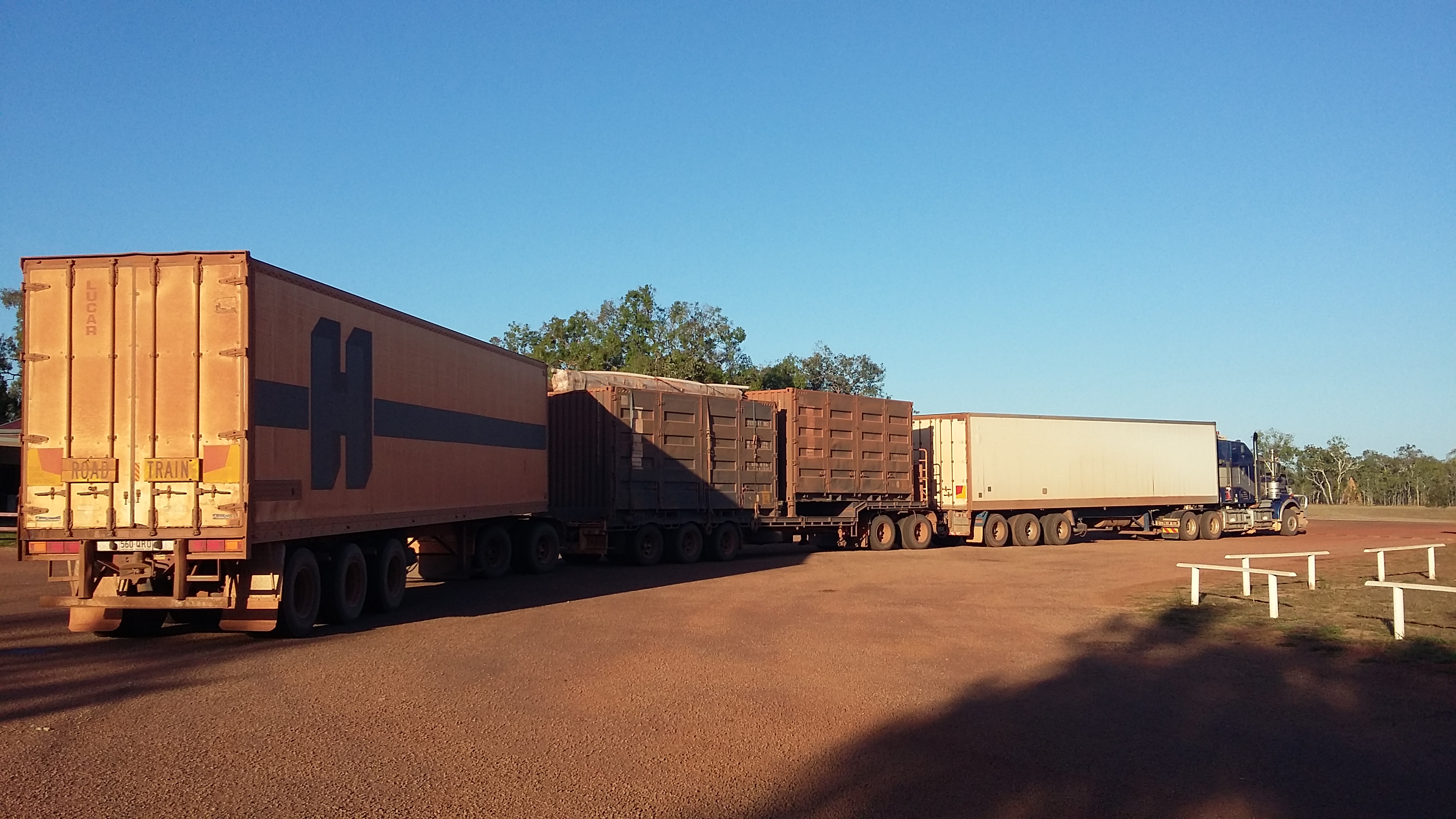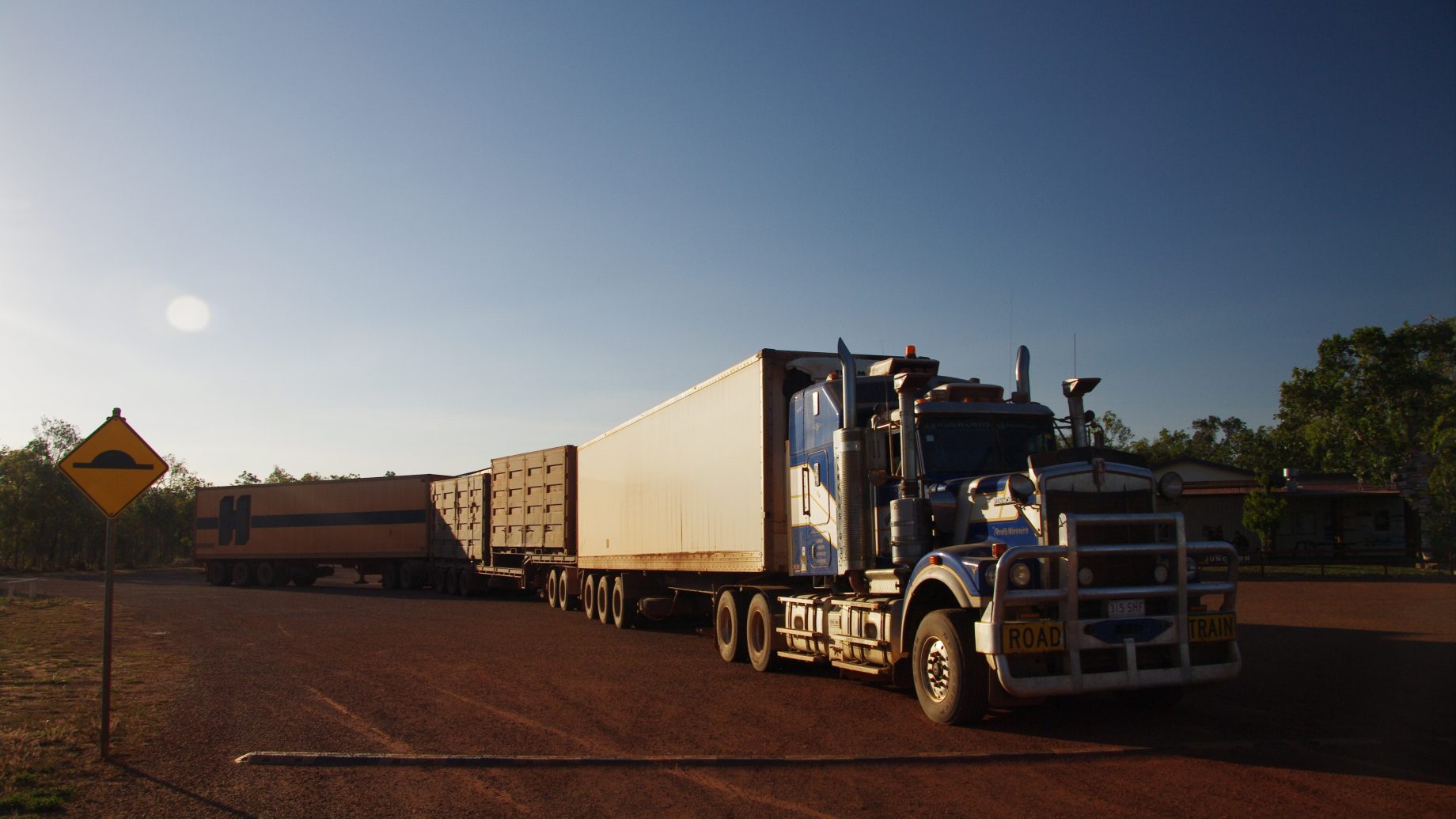Our time at Chilli Beach came to an end this morning as we saw our last dawn over the Coral Sea for a while. Our pack up routine is well rehearsed and we were making our way back towards the Lower Peninsula Development Road (PDR) in good time. Having enjoyed the fresh fish purchased on our way in to Chilli Beach, we decided it was worth returning to the local supplier for some more Spanish Mackerel and cooked prawns. They have gone straight into the freezer for a future meal or two.
We stopped briefly at the Mt Tozer lookout and found out why there was pumice stone along the high water mark at Chilli Beach. Mt Tozer had been part of a bigger network of volcanoes that had erupted ages ago, pumice stone and a granite core that is being slowly erode by the weather are evidence of this ancient activity.

Our journey retraced our tracks back to the PDR, where we turned right and headed north. The turnoff to Weipa heralded the return to corrugations and dust; most commercial traffic would head to Weipa and, as a result, that track is possibly better maintained. The PDR is primarily for visitors in the dry season and probably gets far less traffic as a result. Next up we passed the turnoff to Batavia Downs cattle station – a short cut to Weipa if approaching from the north. The track can be closed with little notice if the station is busy with a muster, so it can’t always be relied on.

Moreton Telegraph Station was an oasis of green in a sea of dust, with sprinklers working overtime to keep the grassed camping area looking a picture. Large mango trees provided excellent shaded areas; we pencilled it in as a possible overnight stop when we are heading south again. A coffee and cool drink were in order while we read about the Steve Irwin Conservation area bordering the Wenlock River. Once an old pastoral lease, it has been taken up as a conservation and research centre in honour of the work done by Steve Irwin.
The final leg of today’s journey was a rough, bumpy affair with numerous dips and plenty of dust. The UHF radio was abuzz with chatter between drivers (when a faster driver was alerting a slower driver to their presence and intention to pass). The slower drivers would confirm when it was safe to do so, and pleasantries would be exchanged at the conclusion of the manoeuvre. Such politeness works in everyone’s favour, as the dust thrown up by moving vehicles makes it almost impossible to see if the track ahead is clear to overtake; a higher-risk approach does no one any favours.
On arrival at Bramwell Junction roadhouse we filled up with fuel at $1.90 per litre, noting that our fuel economy for that leg of the journey was the worst so far (16 litres per hundred kilometres). The continual slowing for dips, then accelerating back to a comfortable speed out of them to negotiate the corrugations, has shown in the fuel economy.
We booked a campsite and found a shady, well grassed area where the solar panel could be deployed in full sun to keep the Tvan batteries topped up. After lunch we went for what we thought was a short drive along the notorious “Old Telegraph Track” (OTT) to the first (and often most challenging) creek crossing at Palm Creek. The track in was no longer as we remembered it from a previous visit. It was badly eroded and impassible in places, where detours known as “chicken tracks” had been pushed through as a bypass alternative. We stopped at one stage and decided to walk for a while. Nothing was familiar, so we returned to the Prado and continued in search of the crossing; this eventually appeared in front of us where a line of taller trees followed the creek bank as it meandered to the west.

Clearly, driving an expensive 4WD off (what is practically) a cliff is a ‘rite of passage’ for some needing to prove themselves (at the expense of trashing their vehicle). What they achieve possibly makes good commercial sense to the towing companies and auto repair businesses on the Cape.

We returned to camp and pondered the motivation to tackle such a high-risk pursuit. The opportunity for a hot shower was taken by us all, after a few shower-free nights on the road. In contrast to our seafood platter consumed last night (while overlooking a stunning bay and setting sun), tonight’s burger was enjoyed on the shaded verandah of the roadhouse while a three-up road train cast ever-lengthening shadows across the fuel pumps out front.

A red sunset full of Cape York dust brought another day to a close.
